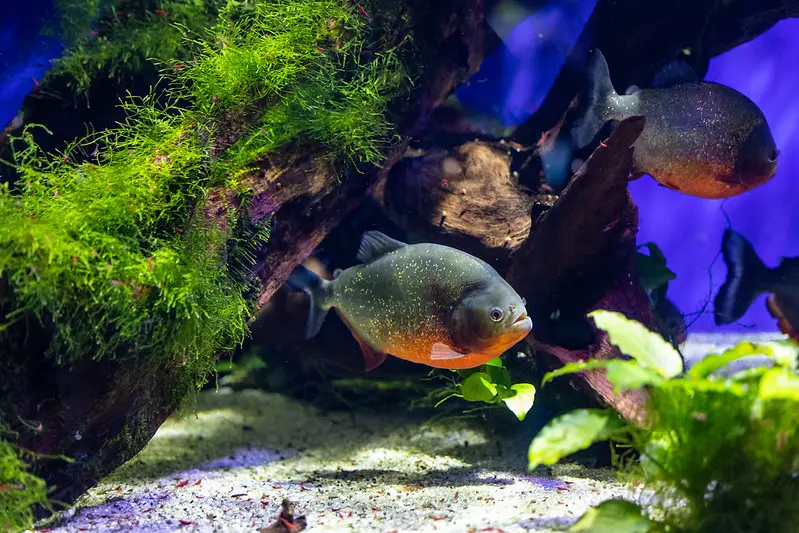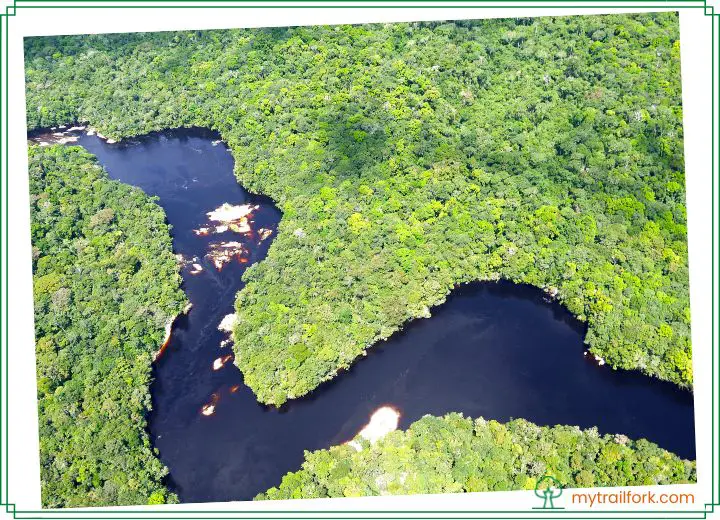The Amazon River flows through many countries in South America. It provides essential habitat for countless species of plants and animals.
So it is a popular destination for adventurers and nature enthusiasts. But many people wonder: Is it safe to swim in the Amazon river?
This topic will explore the dangers of the Amazon River. They include the risks posed by wildlife and poisonous plants.
Besides, we offer tips to stay safe while exploring this beautiful and unique area. Keep reading to discover!
Is It Safe To Swim In The Amazon River?
If you ask: Can you swim in the Amazon river? The answer is No. Swimming in the Amazon River can be dangerous, so we do not recommend it.
Many animals live in this river, and some can be dangerous to humans. Besides, the plants here can have toxins and harmful bacteria. They cause disease or infection. We will explain in more detail below:
Dangerous Amazon Animals
Here are some dangerous animals in the Amazon. In addition, there are many other dangerous species, but we would like to mention the most common here:
Black Caiman
The black caiman is a predatory reptile in the Amazon River. You will also see it appearing in the tributaries of this river. It is the biggest caiman.
Black Caiman has a dark, almost black color. Thanks to that, it can camouflage in the murky waters of the Amazon.
Besides, it has a big head and strong jaws. They are to capture and kill the target. Its teeth are sharp and serrated.
So it can exert tremendous force when biting its prey. So you will be in danger if you encounter this animal in the Amazon river.
Green Anaconda Snake
The green anaconda is a large and powerful snake. It is generally not aggressive toward humans. But it can be dangerous if you look at its size and strength. They are ambush predators.
So they usually wait for their prey to arrive before attacking. If a person accidentally swims near an anaconda hiding place, the snake may perceive the person as a threat and attack.
Red-bellied Piranha
The red-bellied piranha is quite famous in the Amazon River. It is known for its sharp teeth and aggressive feeding behavior. So many people believe swimming in the Amazon River is dangerous.

Piranhas can be dangerous to humans. But the risk of being attacked while swimming in the Amazon River is relatively low.
Piranhas are generally more interested in eating small fish and other aquatic animals. Besides, they only attack people if they feel threatened or hungry.
Electric Eel
Electric eels can create unique electric shocks. They use it to navigate the environment and stun their prey.
Their intense electric shocks can be dangerous and potentially deadly. You can receive an electric shock of up to 600 volts if you come into contact with electric eels while swimming in the Amazon River. It can cause injury.
Amazonian Giant Centipede
The Amazon Giant Centipede has venom. You can see it in the Amazon rainforest, rivers, and streams. It grows up to 30 centimeters in length. Also, its venom can cause severe pain and swelling.
The Amazon giant centipede does not usually occur in large numbers in the Amazon River. But it remains a potential hazard to swimmers and other water enthusiasts.
If you accidentally step on or disturb a centipede while swimming, it could be bitten and exposed to its venom.
Bull Shark
This shark can survive in both saltwater and freshwater environments. There have been reports of sightings of Sharks crawling in the river and its tributaries.
Bull sharks have an aggressive nature, and they can attack humans. So their presence in freshwater environments, such as the Amazon River, increases your risk.
Poisonous Plants in Amazon
We all know plants are essential to the region’s ecology. So they play a role in the food chain. But they can pose a danger to those who contact them.
Therefore, swimming in the Amazon River can increase the risk of exposure to poisonous plants in several ways. Besides, you may have a skin rash if you touch them while swimming.
Some of the most common poisonous plants in the Amazon rainforest include the Manchineel tree. It produces a sap that can cause severe skin irritation and even blindness. This situation occurs when it comes in contact with the eyes.
You can reduce your risk of exposure to toxic plants by avoiding their areas. Remember to wear protective clothing. But the best way is not to swim in this place.
In short, be aware of the potential risks, and you need to take the needed precautions. Then, you can help ensure your safety.
Safe Places To Stay In The Amazon
There are many lodges and eco-resorts located throughout the Amazon. These accommodations range from camping sites to luxury lodges. Besides, many offer a range of amenities such as:
- Guided tours
- Hiking in nature
- A chance to see wildlife.
So it’s critical to research your options carefully when choosing a place to stay on Amazon. Don’t forget to read reviews from other travelers. This tip can help you know about the quality and safety of the accommodation.
You should also ensure that the accommodation you choose has the appropriate safety measures in place:
- Door lock
- Safety window
- Emergency procedures in the event of a disaster
- Other emergencies
By choosing safe and reputable places to stay and following local guidelines and advice, you can help ensure a safe trip.
FAQs
Now below are some faqs about amazon river
Are There Crocodiles In The Amazon River?
Yes, there are crocodiles in the Amazon River. The most common species in the river is the Black Caiman. It can grow up to 16 feet long.
Are There Sharks In The Amazon River?
No, no known species of sharks live in the Amazon River. However, there are several species of freshwater dolphins found in the river.
Do Humans Live In The Amazon River?
No. Humans do not live in the Amazon River itself. But many indigenous communities and settlements line the riverbanks and rely on them for their livelihood.
How Deep Is The Amazon River?
The Amazon River can be very deep in some areas. It has depths of up to 300 feet. But it is also very shallow in other areas, especially during the dry season.
Why Does The Amazon River Have No Bridge?
The Amazon River has no bridge due to many factors, including its wide span, strong currents, and the riverbed is constantly shifting and changing.
In addition, the rainforest environment presents challenges in terms of the construction and maintenance of a bridge.
Conclusion
In short, for the question: Is it safe to swim in the Amazon river? The answer is No. The Amazon River is a fascinating and awe-inspiring destination. But it is essential to exercise caution when swimming in its waters.
The presence of wildlife and the risk of encountering poisonous plants mean that swimming in the Amazon River can be dangerous.
So you must carefully consider this decision. Besides, consult with experienced guides and local experts.
We will be back with new articles. Stay tuned!


